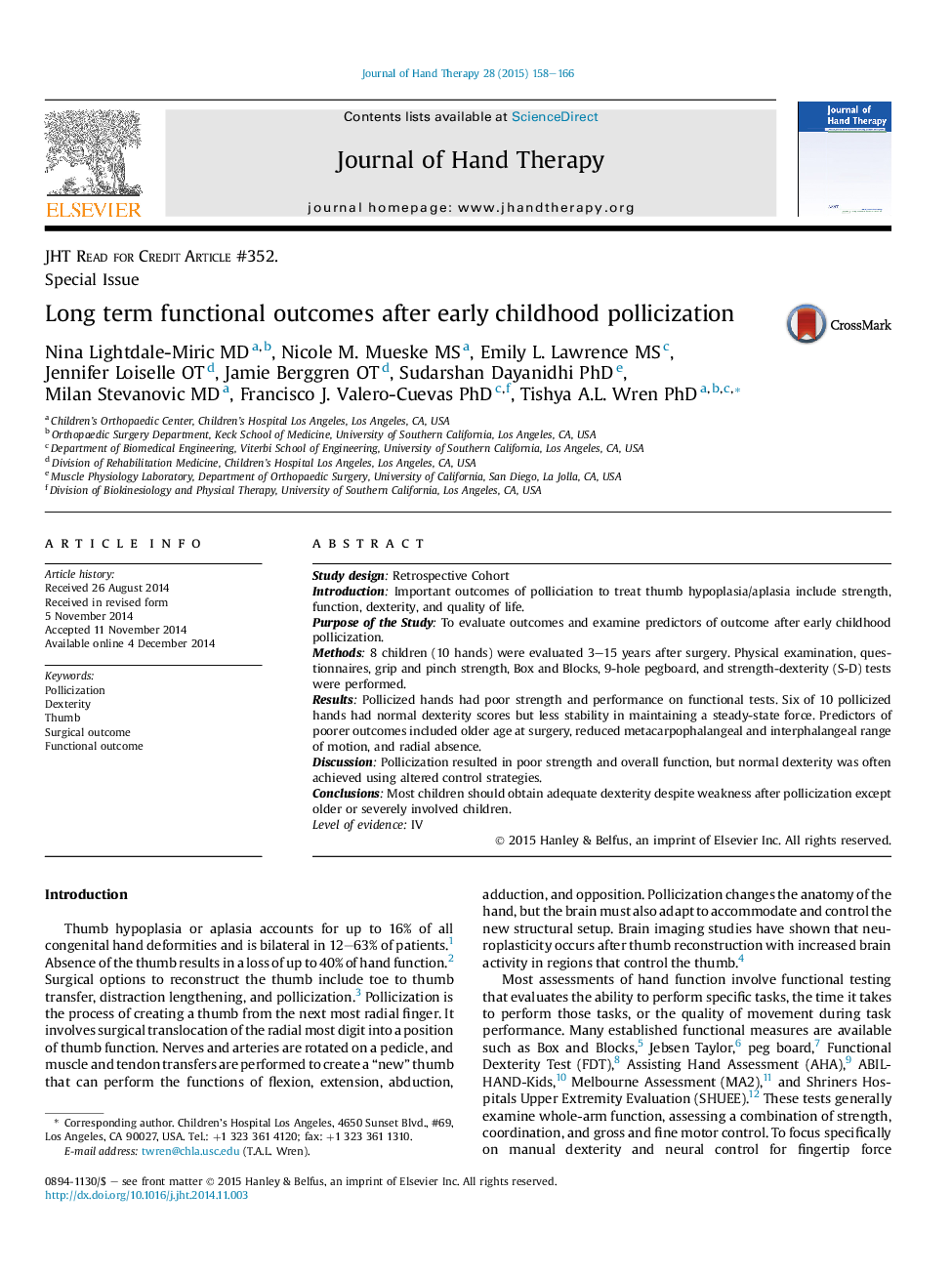| Article ID | Journal | Published Year | Pages | File Type |
|---|---|---|---|---|
| 2694855 | Journal of Hand Therapy | 2015 | 9 Pages |
Study designRetrospective CohortIntroductionImportant outcomes of polliciation to treat thumb hypoplasia/aplasia include strength, function, dexterity, and quality of life.Purpose of the StudyTo evaluate outcomes and examine predictors of outcome after early childhood pollicization.Methods8 children (10 hands) were evaluated 3–15 years after surgery. Physical examination, questionnaires, grip and pinch strength, Box and Blocks, 9-hole pegboard, and strength-dexterity (S-D) tests were performed.ResultsPollicized hands had poor strength and performance on functional tests. Six of 10 pollicized hands had normal dexterity scores but less stability in maintaining a steady-state force. Predictors of poorer outcomes included older age at surgery, reduced metacarpophalangeal and interphalangeal range of motion, and radial absence.DiscussionPollicization resulted in poor strength and overall function, but normal dexterity was often achieved using altered control strategies.ConclusionsMost children should obtain adequate dexterity despite weakness after pollicization except older or severely involved children.Level of evidenceIV
